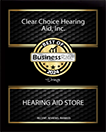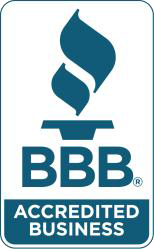
It’s difficult to accept, for many, coming to grips with and acknowledging the reality of hearing loss. Nevertheless, you soldiered through and went to a hearing professional for a hearing aid fitting appointment, because you recognized that’s what is best for your health. More than likely, you quickly realized the advantages one gets from using a hearing aid, including the ability to treat tinnitus, hear speech (even amidst the buzz of background noise), and the potential to recover from mental decline.
But sometimes, among all those life-changing benefits, you get one loud, piercing and shrieking negative. Your hearing aids whistle. The squealing you’re hearing is more commonly known as feedback. It’s like what happens when a microphone comes too close to the sound system, the only difference is this time it’s directly in your ear. Fortunately, this is a problem you can correct relatively easily. We’ve put together a recap of three tried-and-true ways to stop your hearing aid from whistling.
1. The Way Your Hearing Aid Fits Can be Adjusted
The positioning of the hearing aid in your ear or the earmold it’s connected to is likely the most common reason for feedback. The sound can get out and reverberate through the microphone of the hearing aid if it doesn’t fit right. The outcome of that leakage can be a whistling that’s either sporadic or constant, depending on how much sound has escaped and how poorly the fit really is. A plastic tube connects certain hearing aid designs with an earmold. Over time, this piece can crack, harden or shrink, which unseats the earmold from its best position. This movement can cause squealing, but you can fix the issue by switching the plastic piece.
2. Excessive Earwax Should be Removed
It’s ironic to think of something like earwax, which is thought of by many people to be foul or unwelcome, as beneficial to our bodies, but it really is. Dirt and other substances are stopped from entering the ears by this icky substance which acts as a defense. Actions, such as talking or chewing assist your ears to control the amount of earwax they produce but there can be a negative effect if too much earwax builds up. Feedback will inevitably happen if you insert a hearing aid on top of an excessive amount of earwax. Due to the blockage from earwax, the amplified sound can’t go anywhere and this is the reason for the feedback. With no clear exit, the sound circles and passes through the microphone once more. Doing things like letting warm shower water run into your ears can help eliminate excessive earwax. However, the best idea might be to speak to a hearing specialist about correctly cleaning your ears to avoid excessive accumulation and subsequent whistling.
3. Make Sure The Microphone is Uncovered
Often the most effective solution is the most obvious. How often have you seen somebody try to take a photo with the lens cap on their camera and watched as they became momentarily perplexed about why the picture didn’t develop? The same concept is applicable here. Whistling can happen when something is covering the device. You could even get the same outcome by covering the microphone with your hand or another object, like if you hug someone and bury your ear into their shoulder. This problem should be easy to fix simply by uncovering the hearing aid.
Here’s a bonus tip: A new hearing aid may be the best solution. Some causes for concern are being alleviated by modern hearing aid models and manufacturers are developing new technology regularly. Give us a call if you are interested in learning about new hearing aid technology or if you are having a problem with your current hearing aids whistling.
The content of this blog is the intellectual property of MedPB.com and is reprinted here with permission.
The site information is for educational and informational purposes only and does not constitute medical advice. To receive a personalized free hearing test and hearing loss consultation, call today to set up an appointment.










